Just as Napier’s hand appears in some entries in Forman’s casebooks, so Napier’s assistants and protégés, many of whom worked as his curates, left traces in his records. In our edition, initials indicate different hands (e.g. ‘RN’ for Richard Napier, ‘SRN’ for Sir Richard Napier). The handwriting of two dozen people — mostly astrologers, a few servants and patients — appears in the casebooks. Here are the other practitioners that we have identified, ordered by first appearance in the casebooks.
Gerence James [Marks] (1568–1646) served as Napier’s curate at Great Linford from at least 1602 to late 1605, when he became vicar of Pattishall in Northamptonshire. James had followed Napier’s route from Devon via Exeter College, Oxford, as had his older brother John Marks, a close contemporary of Napier’s who preceded James in the vicarage at Pattishall and who also practised medicine. Besides his pastoral duties, James acted as an amanuensis and assistant in Napier’s medical practice, deploying the same astrological techniques as his master. On 13 February 1603 Napier noted that he had entrusted his medicines to James, after which the curate kept his own medical records in a separate volume running concurrently with Napier’s. He appears to have worked as co-practitioner on a number of cases and as a locum when Napier was away from home. His hand continues to appear occasionally in Napier’s records some years after the end of his service as curate. In later years James received from the Throckmorton family the rectories of Tiffield (1617) and Paulerspury (1625), though in 1635 he was deprived of the living at Paulerspury on a charge of simony. By this point his health was failing: he wrote a will in November 1631, and was described in court records of 1635 as ‘a very old and feeble man’.
Sources: Foster, Alumni Oxonienses; CCEd; Ross Dandridge, Anti-Quack Literature in Early Stuart England (PhD, University of London); MS Ashmole 215, f. 5r; John Bruce (ed.), Calendar of State Papers, Domestic Series, Charles I. 1634–1635 (London: Longman, Green, Longman, Roberts, and Green, 1864), p. 536.
Mr Willoughby (fl. 1605–1622), about whom little is known, was a practitioner who stood in for Napier during his absences. He visited Napier with the Oxford surgeon, James van Otten, in March 1605. Willoughby’s hand first appears in Napier’s casebooks in August 1605, then his cases run for extended periods during the springs of 1607 and 1608 and the summers of 1612 and 1614. His name is most explicitly associated with the hand in an entry of 1618 in which Napier noted that ‘Mr Willobe did set this figure’. Especially in the early entries, Willoughby typically referred to Napier in either the second or third person with notes to the effect that the querent would visit or write personally to Napier after his return. Willoughby’s hand last appears in the casebooks in July 1618. He seems to have been part of the eminent Willoughby family: in 1622 Napier noted that he was kinsman to the younger Percivall Willoughby, the obstetrician who had been apprenticed to van Otten in 1619.
Sources: All of our evidence about Mr Willoughby comes from Napier’s casebooks.
Robert Wallis (1586–1666) was born in Buckinghamshire (see his nativity), studied at Balliol College, Oxford from 1603 to 1611, and was Napier’s curate from 1611 or 1612 to around 1616. On 12 December 1614 Napier wrote, ‘I revealed to Mr Wallys’, but does not say what he revealed (MS Ashmole 237, f. 134r). Wallis’s hand first appears in Napier’s casebooks in January 1615. In March 1616, Napier recorded that ‘Goody Kent met me & Mr Wallys in the street & called vs coniurours’. In 1616 Wallis took up a living in Droitwich, Worcestershire, but continued to assist Napier with his practice, with bursts of activity concentrated in 1620, 1625 and 1627. Wallis seems to have encountered legal difficulties with his living, which he resigned in 1621. He held various livings thereafter, alongside, from 1631, becoming domestic chaplain to Frances, Duchess of Richmond and Lennox, one of Forman’s and Napier’s regular clients). Wallis died in Ellesborough in 1666, where he had recently been appointed as rector for a second time, and is buried there. An inscription on a small stone against the south wall of the Church of St Peter and St Paul commemorates his work for the church and knowledge of medicine. His ghost was sighted there in 1987.
Sources: Foster, Alumni Oxonienses; CCEd; for legal difficulties see CASE46091, Ashmole 201, f. 97r uL, CASE47874; VCH Bucks.; .
Ralph Ruddle (1600-1689) was born in Bishop’s Cannings in Wiltshire and attended All Souls’, Oxford. He was ordained priest and graduated MA in the space of a few days in mid-1624, and was swiftly taken up by Napier as a curate. His hand first appears in Napier’s casebook towards the end of 1624, and he remained curate at Great Linford until Napier’s death ten years later. He helped with the medical practice a great deal during that period, and in 1633 he was granted a medical licence by the Archbishop of Canterbury. After his time in Great Linford he seems to have returned to Bishop’s Cannings for at least a short while, because his son John (who himself became a clergyman and achieved fame through the publication of his encounter with a ghost) was born there in 1627. In 1642 Ruddle was appointed rector of Stoke Dry in Rutland, a position he held the position until he died in August 1689.
Sources: Foster, Alumni Oxonienses; CCEd; the parish registers of Bishop’s Cannings and Stoke Dry (the latter providing a useful sample of his handwriting); for the medical licence see Lambeth Palace Library Research Guide: Medical Licences Issued by the Archbishop of Canterbury 1535–1755; John Ruddle’s ghost memoir is ‘A Remarkable Passage of an Apparition, related by the Rev. Dr. Ruddle, of Launceston, in Cornwall, in the year 1665’, from Mr. Campbell’s Pacquet, for the Entertainment of Gentlemen and Ladies (London, 1720), pp. 20–33.
Sir Richard Napier (1607–1676), the second son of Napier’s brother Robert, shared his uncle’s medical vocation and also used his astrological methods. He was knighted on 4 July 1647, and in 1664 became an honorary member of the London College of Physicians — the corporation that had so long and so vainly striven to suppress the practice of Napier’s mentor Forman. From the late 1620s, even before receiving a medical licence in 1633, the younger Richard sometimes acted as a locum for his uncle and treated several of his patients: indeed, he married one of them, Anne Tyrringham or Tyringham. A number of the later entries in Napier’s casebooks are in Sir Richard’s hand, and some of his records survive through the early 1660s.
Sources: Further details about Sir Richard’s biography are included in his uncle’s entry in the Oxford Dictionary of National Biography. See also Alumni Oxonienses, where Sir Richard’s surname is spelled ‘Napeir’; and his entry in Munk’s roll.
Theodoricus Gravius [Theodore Graw] (fl. 1600–1661) arrived at Napier’s house in October 1630. Gravius was a refugee, a scholar and skilled alchemist from Hesse who, after sixteen years’ study in five universities, had travelled to England to escape the Thirty Years War. Sent to Napier by one of Napier’s alchemical associates to be his ‘workman’ (laboratory assistant), he also acted as Napier’s amanuensis and held consultations in Napier’s absence; he may have been his curate. Nearly 270 entries appear in his hand, both in the three years before and the months following Napier’s death in 1634. He followed Napier as rector of Great Linford, and seems to have continued there until his death in early 1661.
Sources: Will Poole (2009) ‘Theodoricus Gravius (fl. 1600–1661): Some Biographical Notes on a German Chymist and Scribe Working in Seventeenth-century England’, Ambix, 56: 239–52.


